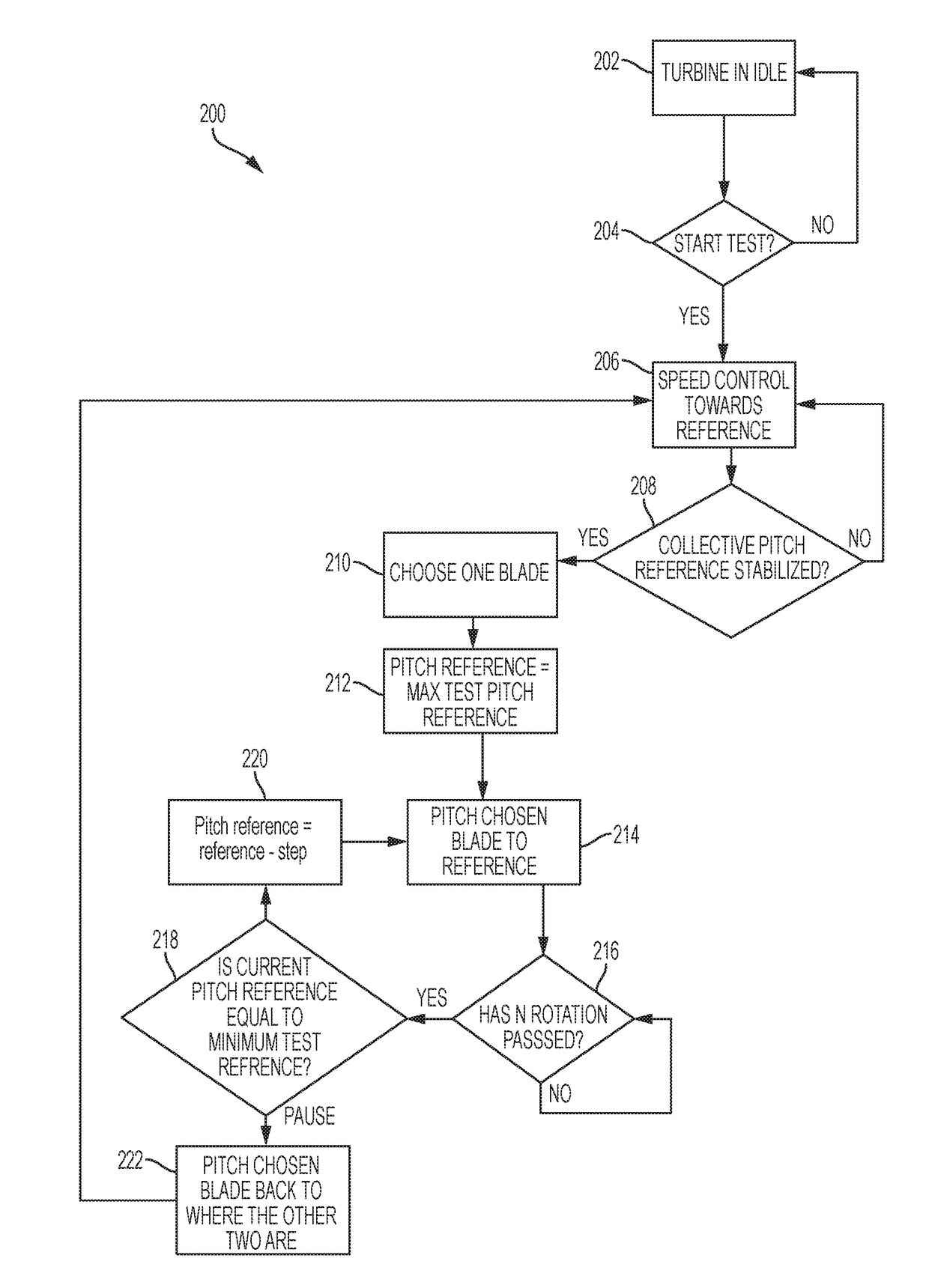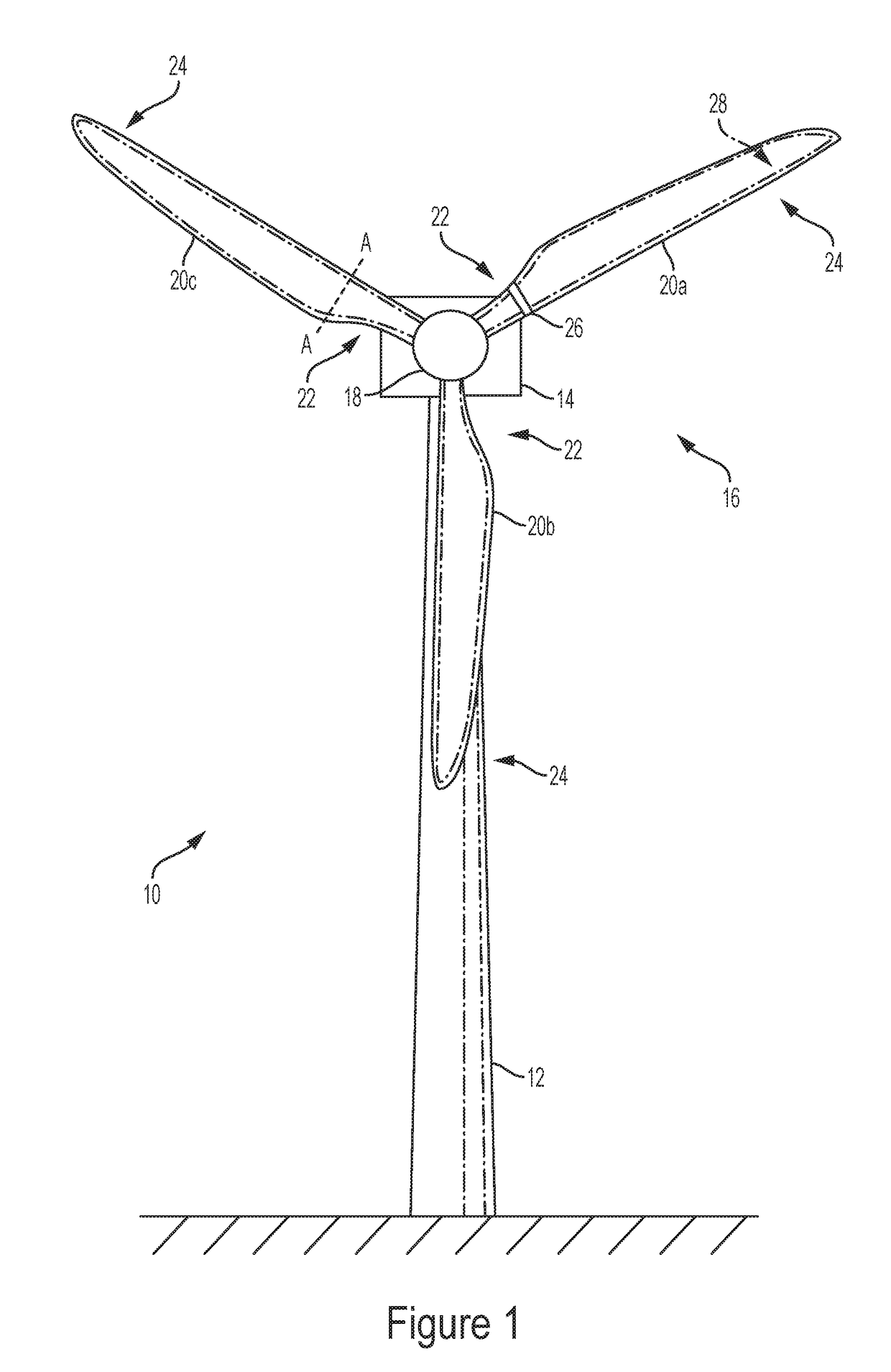Method of calibrating load sensors of a wind turbine
a technology of load sensor and wind turbine, which is applied in the direction of motors, engine control, programme control, etc., can solve the problems of difficult to stop the rotor at a specific position, insufficient approaches to provide the data needed for more sophisticated models, and insufficient wear or damage mitigation
- Summary
- Abstract
- Description
- Claims
- Application Information
AI Technical Summary
Benefits of technology
Problems solved by technology
Method used
Image
Examples
Embodiment Construction
[0031]Embodiments of the invention provide improved methods for calibrating load sensors in wind turbines, particularly by a scheme of movement of the rotor blades, and by using more of the data from the load sensors to inform a more sophisticated model of the loads.
[0032]FIG. 1 is a schematic view of a wind turbine according to an embodiment of the present invention. A wind turbine 10 comprises a tower 12 on which a nacelle 14 is supported. A rotor 16 is mounted to the front of the nacelle 14. The rotor 16 comprises a hub 18 on which three equally-spaced rotor blades 20a, 20b, 20c are mounted. The rotor 16 includes a blade pitch system capable of varying the pitch angle of each rotor blade 20a, 20b, 20c independently, for example using an electric or hydraulic blade pitch drive.
[0033]In this embodiment, the rotor blades 20a, 20b, 20c each have a substantially cylindrical cross section at their root end 22. The cross section smoothly transitions to an aerofoil profile at a maximum c...
PUM
 Login to View More
Login to View More Abstract
Description
Claims
Application Information
 Login to View More
Login to View More - R&D
- Intellectual Property
- Life Sciences
- Materials
- Tech Scout
- Unparalleled Data Quality
- Higher Quality Content
- 60% Fewer Hallucinations
Browse by: Latest US Patents, China's latest patents, Technical Efficacy Thesaurus, Application Domain, Technology Topic, Popular Technical Reports.
© 2025 PatSnap. All rights reserved.Legal|Privacy policy|Modern Slavery Act Transparency Statement|Sitemap|About US| Contact US: help@patsnap.com



